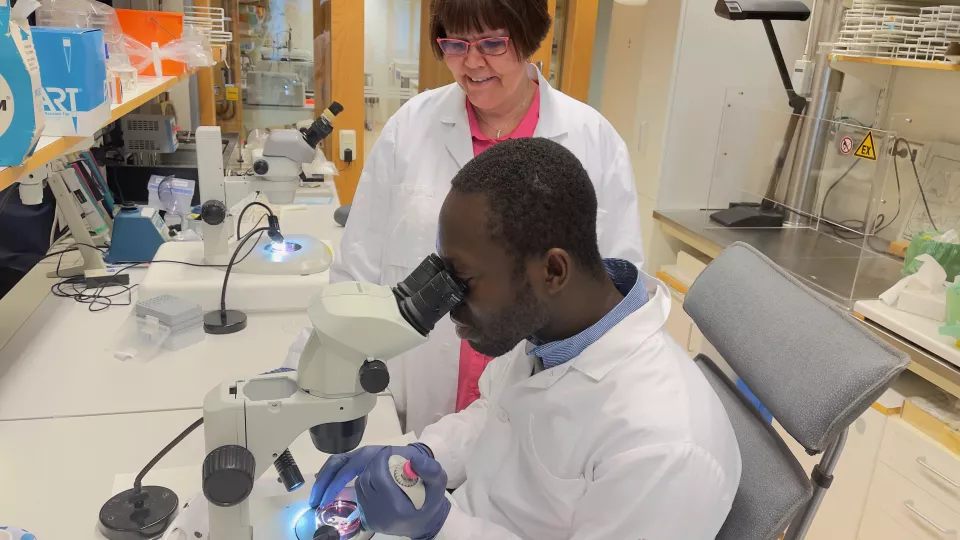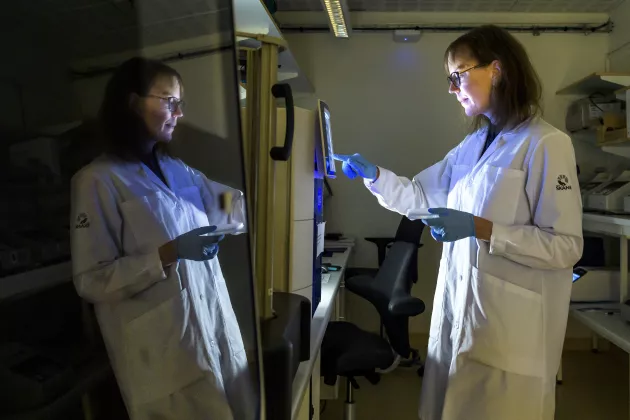In type 2 diabetes, the ability of the pancreas to produce and release insulin is impaired. Previous studies have demonstrated that microRNAs are involved in this deterioration process. MicroRNAs are non-coding RNAs that regulate the levels of genes and proteins in a cell. Reducing the amount of microRNA could be a possible treatment for patients with type 2 diabetes.
Research has shown that a certain microRNA, called miR-200c, seems to affect insulin secretion in diabetic mice. Until now, there has been a lack of knowledge about the role of miR-200c with regard to insulin secretion in humans.
“Our study demonstrates that the levels of miR-200c differ between people with and without the disease. Few studies within this area have been conducted with such wide range of human material as in this study,” says Lena Eliasson, a diabetes researcher at Lund University Diabetes Centre (LUDC) and corresponding author of the study, published in the scientific journal Diabetes.
Increased insulin secretion
Their measurements of miR-200c in islets of Langerhans from 34 deceased donors with and without type 2 diabetes demonstrated increased levels of miR-200c in people with the disease. The researchers also carried out experiments in islets of Langerhans from deceased donors with type 2 diabetes in order to determine whether it is possible to increase insulin secretion by reducing the levels of miR-200c in the cells. The experiments resulted in increased insulin secretion in the islets of Langerhans of the three available donors.
“The increase was approximately threefold in all the donors. We would have liked to carry out this experiment in more donors, but it is difficult to come across newly donated material. We are of course very grateful to the donors who have contributed to the study in different ways. It is important to understand how insulin secretion is regulated in humans to develop new treatments,” says Jones Ofori, one of the main authors of the study and a researcher in diabetes and epigenetics at LUDC.
Improved treatments
The researchers behind the study are planning to confirm their results in diabetic rats to better understand how insulin secretion is impacted when they reduce the levels of miR-200c. An important research objective is to develop new treatments of type 2 diabetes. Previous research at Lund University Diabetes Centre has shown that diabetes can be divided into different subgroups based on disease progression, and that there are some groups of patients exhibit greater deficiencies in insulin secretion than others.
“Current treatment options for type 2 diabetes are not optimal for all patients. Several studies have shown that there is a need for more individualised treatments of type 2 diabetes. It may be interesting for us to target a treatment towards groups which are showing severe impairment in insulin secretion. In the long-term perspective, we hope that our research will lead to treatments that may contribute to better control of blood sugar levels,” says Lena Eliasson.
The research group is currently mapping microRNAs that may be involved in the secretion of insulin in type 2 diabetes. This knowledge is of importance in the development of precise treatments.
“In our mapping of microRNAs, we can see that miR-200c is a strong candidate for targeted treatments, that also appears in other studies. A challenge ahead of us is to develop a treatment for deficient insulin secretion that will only affect the islets of Langerhans and no other tissues,” says Lena Eliasson, professor in experimental diabetes research at Lund University.




